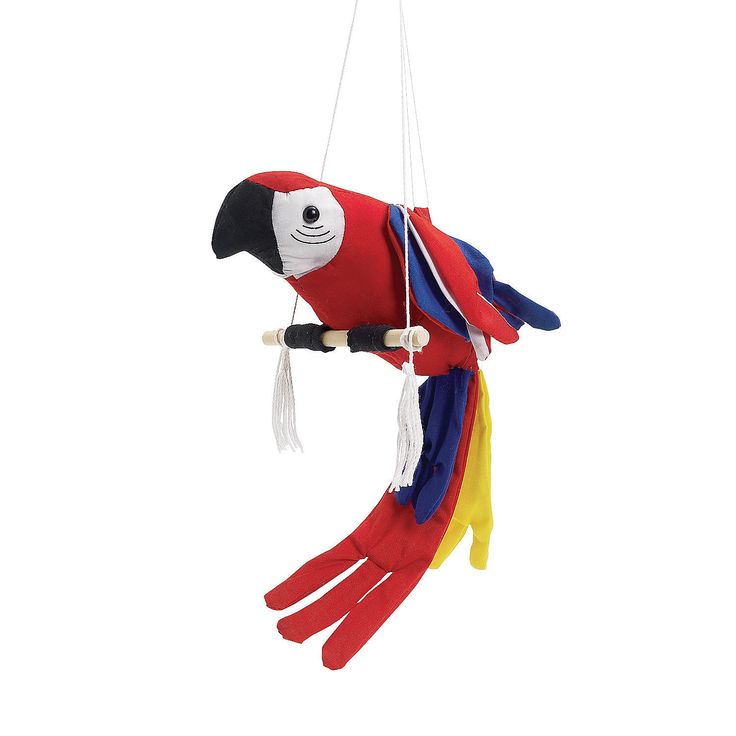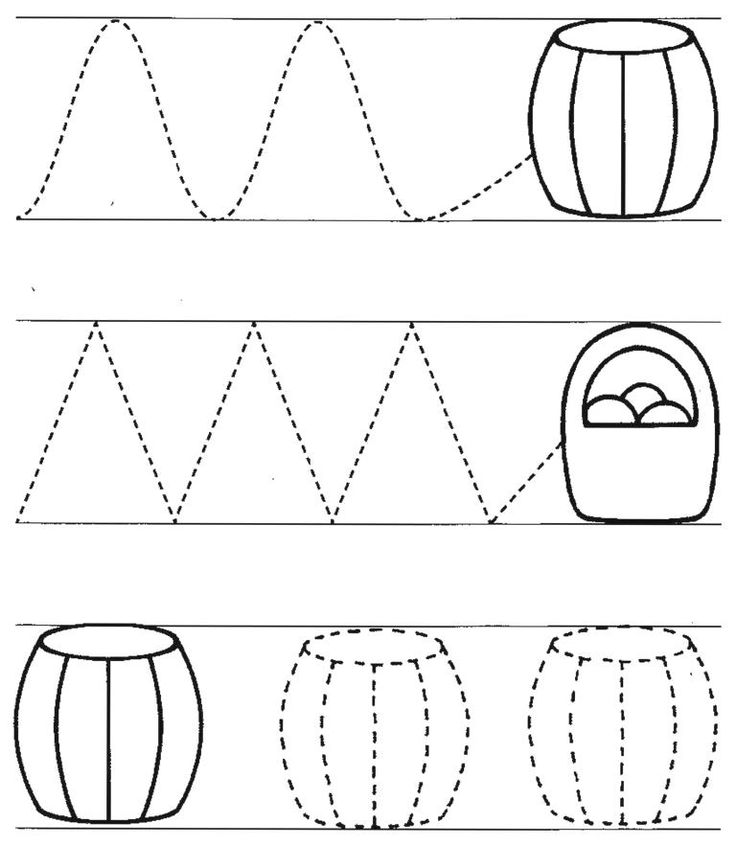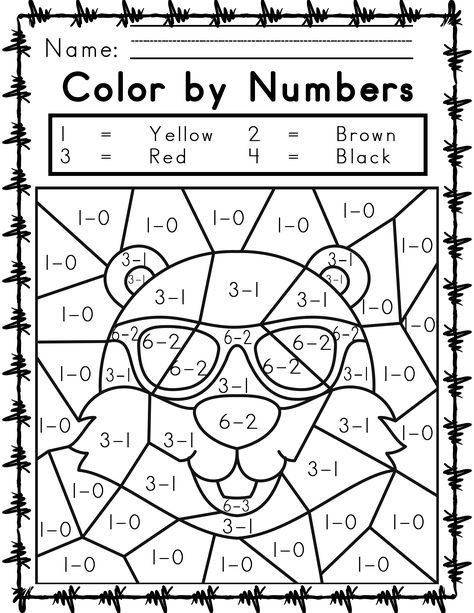Parrot and pirate
The Surprising Truth About Pirates and Parrots
A friend to pirates everywhere. (Photo: peasap/flickr)
Ever since Long John Silver clomped around on a wooden leg with a parrot on his shoulder, the literary and pop-culture conception of pirates has involved the parrot. But at this point, fact is very hard to separate from fiction. What, exactly, about a classic pirate Halloween costume—the parrot, the peg leg, the eyepatch, the bandanna, the snarling vaguely Scottish accent—is actually real? Is any of it real?
“The parrot trope is almost certainly grounded in reality,” says Colin Woodard, author of The Republic of Pirates: Being the True and Surprising Story of the Caribbean Pirates and the Man Who Brought Them Down. Long John Silver, the star of Robert Louis Stevenson’s
Treasure Island, was the first major fictional pirate character to walk around with a pet parrot, but this, according to Woodard and other experts in the field of classic piracy I spoke to, was based on real truths. And the reasons why the parrot became associated with pirates actually give us a pretty good glimpse at the real, true-life existence of a pirate during the Golden Age of Piracy.
Long John Silver, Jim Hawkins and his Parrot, from the 1911 edition of Long John Silver. (Photo: Public Domain/WikiCommons)
The Golden Age of Piracy, a period lasting from, in the broadest sense, the mid-1600s through around 1730, encompassed a few different major geopolitical and economic movements that created a space for pirates. For one, the discovery of the Americas and Australia led to a boom in exploration, which in turn led to an absurd amount of money and valuables being ferried across oceans. Money, gold, slaves, spices, and other highly prized goods (“goods,” in the case of slaves) traveled back and forth. They were comparatively unprotected, the vastness of the oceans and the miserable conditions of trans-oceanic journeys leaving them weak and vulnerable. And many former sailors, with deep knowledge of the sea, wondered why they should bother the difficult slog of ferrying goods when they could simply steal them.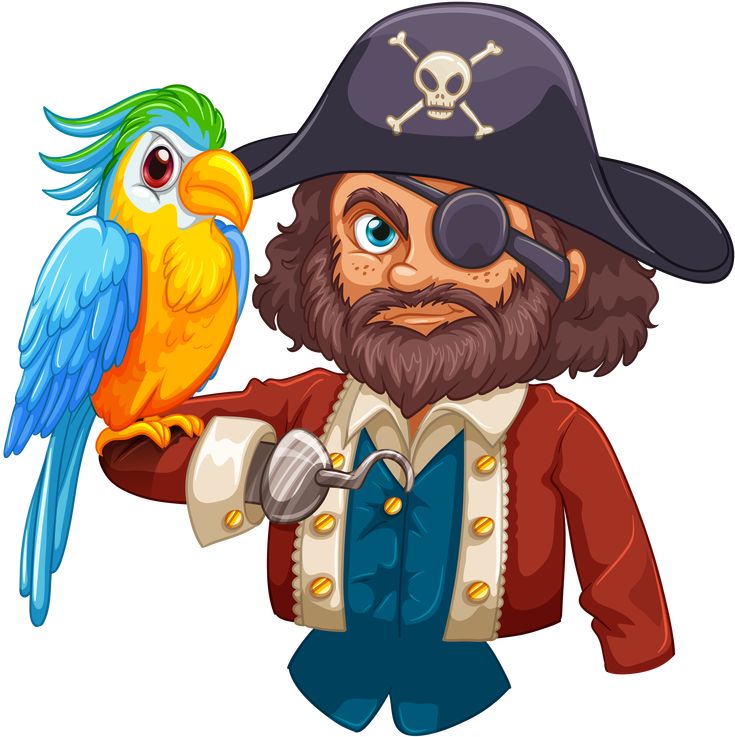
And so came the pirates.
Different portions of the Golden Age of Piracy, which is a term created by and endlessly argued over by pirate historians, resulted in different forms and different amounts of piracy. Angus Konstam, author of The History of Pirates and one of the foremost experts in the world, would prefer the term was restricted to an eight-year period from 1714 through 1722.
A French Ship and Barbary Pirates, c. 1615. (Photo: Public Domain/WikiCommons)
Regardless, pirates, depending as they did on robbing ships, mostly had to go where the ships were. They followed trade routes, which means they ended up in specific places; you didn’t see pirates flocking to deep South America or anywhere in the Pacific Ocean. They stayed with the ships, and ended up largely in the Caribbean, West Africa, and the Indian Ocean’s coasts.
On long trips, whether conducted legally or illegally, pets were desired but would need careful vetting.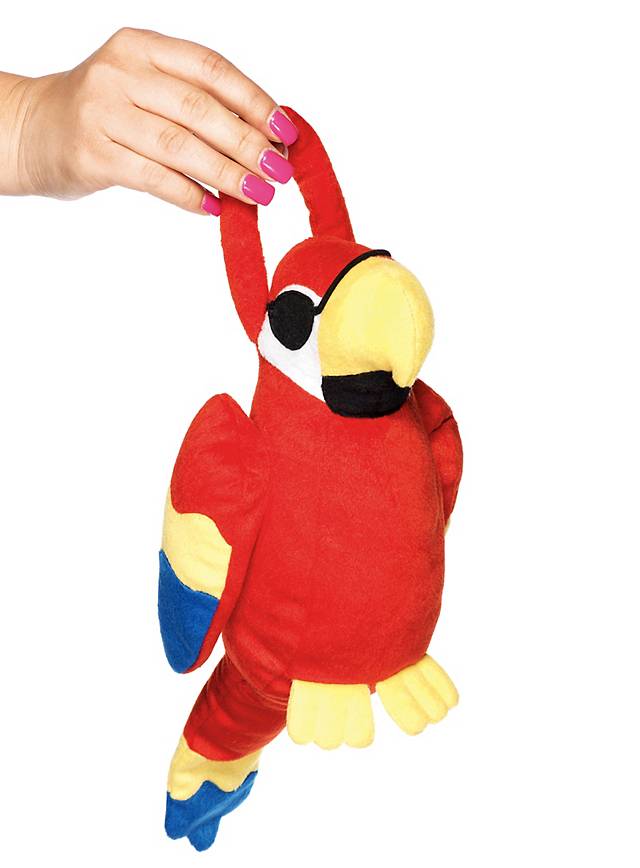 These long voyages, remember, could last weeks or months, and mostly, they were incredibly boring and uncomfortable. A companion animal could help ease the way. What kind?
These long voyages, remember, could last weeks or months, and mostly, they were incredibly boring and uncomfortable. A companion animal could help ease the way. What kind?
Capture of the Pirate Blackbeard, 1718. (Photo: Public Domain/WikiCommons)
“I would reason that any large pet would be difficult to keep on a seagoing vessel, but cats might very much be prized for their ability to catch vermin like rats in the holds, etc of a vessel,” says Woodard. David Head, author of Privateers of the Americas, told me: “I’ve never seen references to dogs. Dogs as pets was more of an aristocratic thing in the early modern period.”
But pirates were traveling to exotic lands, had quite a bit of free time, had disposable income, and thus had no particular reason to restrict themselves to ordinary European pets like cats and dogs. Monkeys were not uncommon, and the concept of a pet monkey made its way into fiction as well—Captain Barbossa, in the
Pirates of the Caribbean films, has one.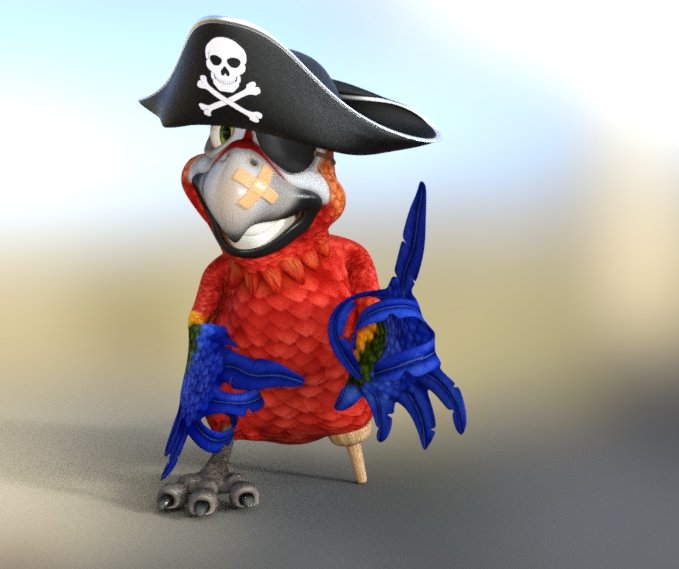 But a parrot was more sensible. They don’t eat much, compared to a dog or a monkey, and what they do eat (seeds, fruits, nuts) can be easily stored on board. They’re colorful, and intelligent, and funny, and for a pirate (or a legal sailor) wanting to show off in port, a parrot would do nicely.
But a parrot was more sensible. They don’t eat much, compared to a dog or a monkey, and what they do eat (seeds, fruits, nuts) can be easily stored on board. They’re colorful, and intelligent, and funny, and for a pirate (or a legal sailor) wanting to show off in port, a parrot would do nicely.
An engraving of Blackbeard the Pirate - but no parrot. (Photo: Library of Congress)
I asked the pirate experts I spoke to whether parrots would have been part of any sort of exotic pet trade. “Back home people would pay good money for parrots and other exotic creatures, and sailors could easily buy them in many Caribbean ports. Some were kept though, but most were sold when the ship reached home. They were colorful, they could be taught to talk—always entertaining—and they fetched a good price in the bird markets of London,” says Konstam. Woodard, though, noted that it might be tricky for a pirate to legally sell anything, especially an attention-grabbing item like a parrot from the New World. Cities like Boston and Charleston, where a parrot might be sold, were much smaller in those days, and pirates were often well-known and hunted criminals who would have a hard time entering the waterways of more populous cities like London.
Cities like Boston and Charleston, where a parrot might be sold, were much smaller in those days, and pirates were often well-known and hunted criminals who would have a hard time entering the waterways of more populous cities like London.
Konstam also noted one account from the early 18th century when William Dampier, a British explorer, noted that the best parrots came from near Vera Cruz, a coastal region of Mexico. Pirates may have changed but humans have not. Vera Cruz remains a hotspot for the illegal parrot trade, a place where thousands are illegally poached each year.
Why Are Parrots Associated with Pirates? [Facts vs. Fiction!]
When you think of pirates, the first image that comes to mind is a parrot. In fiction, they’re always squawking commands or whistling on the pirate’s shoulder.
Parrots are so associated with pirates that they’ve become a staple in fiction. That surely means that parrots were common pets for swashbucklers throughout history.
Parrots are linked to pirates mostly due to fiction. In Robert Louis Stevenson’s Treasure Island, the titillating character of Long John Silver had a pet parrot. Because the book was so famous, the following stories incorporated the established stereotypes.
In Robert Louis Stevenson’s Treasure Island, the titillating character of Long John Silver had a pet parrot. Because the book was so famous, the following stories incorporated the established stereotypes.
In reality, Long John Silver’s parrot was simply a nod to the thriving parrot trade of the 18th century. During this time, pirates would steal and sell parrots but rarely kept them as pets.
The wealthy upper class of Europe would pay a high price for parrots. Because of this, merchant ships transported parrots from South and Central America to the Old World.
When pirates intercepted and raided the ships, they could profit greatly. Some pirates may have kept parrots as companions and entertainment on their ships.
However, most kept parrots as cargo to sell later, like the rest of their stolen merchandise.
Did Pirates Really Keep Parrots?
Most pirates only sought out parrots as exotic goods to trade and wouldn’t have kept a parrot for themselves. After all, they could sell the parrots en masse for a hefty price.
During the 18th and 19th centuries, there was a huge demand in the western world for parrots, especially in Europe. These were colorful, talkative creatures from Central and South America. Many nobles and richer merchant families were willing to pay handsomely to get their hands on an exotic pet.
Throughout the golden age of pirates, transporting goods and animals from the New World back to the Old World was lucrative. Ship owners and captains could make a fortune in the trade of parrots, spices, and materials.
Why Did Pirates Keep Parrots?
According to The Mariner’s Mirror, pop culture has oversold parrots as exotic companions for pirates. Finding them on the shoulder of a captain was a rare event.
The parrot trade played a huge role in how pirates fared in the 18th and 19th centuries. They used them as high-value goods that could expand their operations and fund their ventures.
The New World had a lot of unfamiliar goods and animals.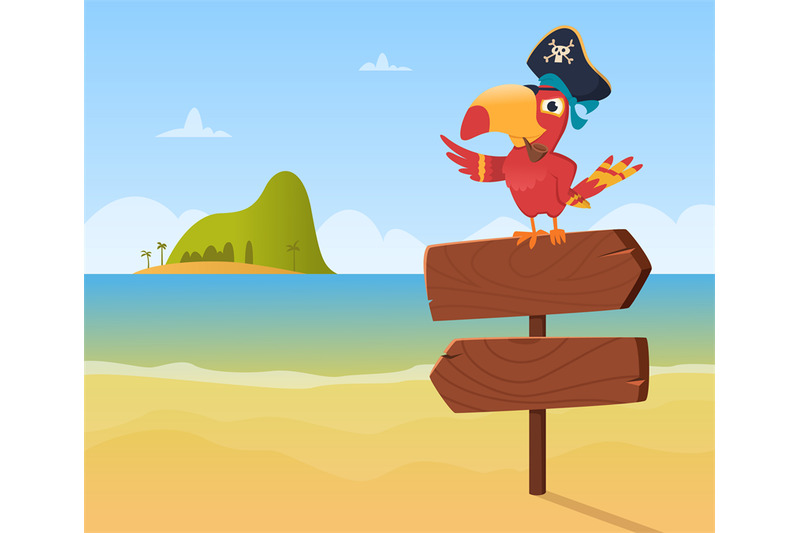 Due to their colorful feathers and social qualities, parrots were among the most popular exotic animals in the West Indies.
Due to their colorful feathers and social qualities, parrots were among the most popular exotic animals in the West Indies.
Parrots were status symbols and impressively intelligent companions. They were even prized differently than parrots found in Asia.
According to Molecular Phylogenetics and Evolution, although the parrot trade thrived worldwide, New World parrots differed from Old World parrots.
Parrots from South and Central America had many advantages in looks, behavior, and genes. Pirate ships would acquire parrots during raids of merchant’s vessels in the New World.
They could improve their wealth and connections with this new cargo in tow.
Why Do Pirates Have Parrots On Their Shoulders?
Most pirates didn’t keep parrots on their shoulders, as the stereotype would have us believe. This trope comes from the antagonist in Treasure Island, Long John Silver.
He famously kept his parrot Cap’n Flint on his shoulder. The pirate stereotype bloomed from fiction rather than being influenced by fact.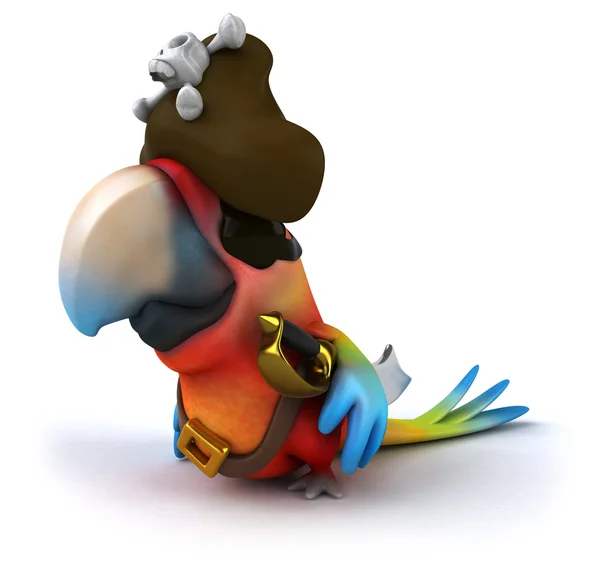
It’s possible that real pirates walked around with parrots on their shoulders, but not many accounts of this can be found. If it did happen, they intended to sell the parrot later, which was often the case with monkeys.
Pirates might entertain themselves by playing with them or letting parrots sit on their shoulders during the voyage. Once the ship reached a port where it could sell goods, parrots would be treated like any other cargo, and they would be sold for profit, and the pirate would return to work.
Reasons Why Pirates Have Parrots In Fiction
According to East Tennessee State University, it’s likely that the author of Treasure Island got his information about pirates from A General History of Pyrates. This is an 18th-century book about swashbucklers. The book mainly took its information from famous pirates like:
- Blackbeard
- Stede Bonnet
- Mary Read
- Anne Bonny
These people formed an egalitarian pirate republic in the Bahamas between 1717 and 1725. The gang of pirates heavily influenced the character Long John Silver in Treasure Island, and Cap’n Flint was featured in an act of creative license to reinforce the character’s place in the wealthy Atlantic trade.
Many books, movies, and stories used Treasure Island as inspiration and reference. This made the small detail of parrots all the more prominent until they became inseparable from pirates.
We can also thank Treasure Island for popular clichés like:
- Eye patches on pirates
- Peg legs for pirates
- Harsh West Country English accents belonging to pirates
Parrots are associated with sailors in Daniel Defoe’s 1719 novel Robinson Crusoe. In that novel, the titular character Crusoe was stranded on a tropical island after a shipwreck.
His pet parrot, Poll, kept him company on the island. While he was stranded, he also taught two other parrots on that island how to talk.
How Much Did A Parrot Cost for A Pirate?
Many ships were full of parrots that could be purchased (and sold) for $5.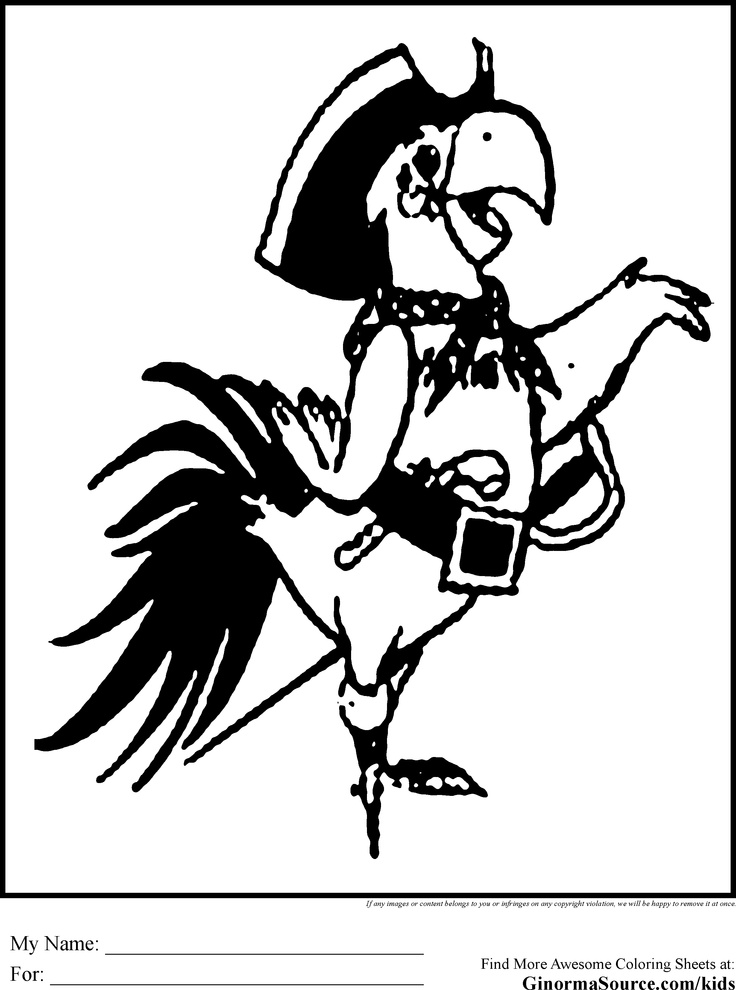 That is equivalent to about $320 today. Ship captains and higher-ranking pirates could afford this outlay.
That is equivalent to about $320 today. Ship captains and higher-ranking pirates could afford this outlay.
After buying the parrot for $5, other expenses would be to maintain the parrot, such as food. The pirate would also need to care for the parrot while juggling other responsibilities on a ship. This would be a challenge if a pirate wasn’t successful and wealthy.
However, more profitable seamen would have this money to spare. According to George Mason University, the pirate economy had a delicate balance.
A buccaneer could earn up to 700 pieces of eight on a decent cruise. In comparison, 40 shillings (around 8 pieces of eight) a month was considered a good wage for a seaman in 1685.
Because of the low cost of living at the time, this amount of money held a lot of value. With all this excess income, a successful pirate could afford to buy and keep a parrot if they wanted to.
Why Do Pirates Have Parrots As Pets?
Keeping a pet on a ship would have been difficult for sailors and pirates alike. If a ship had a pet, it was likely used for pest control alone. That’s why the most common pets on ships were cats. They hunted and killed rats, keeping the vessel’s food supply safe.
If a ship had a pet, it was likely used for pest control alone. That’s why the most common pets on ships were cats. They hunted and killed rats, keeping the vessel’s food supply safe.
A parrot wouldn’t serve this purpose nearly as well. There are no historical accounts of pirates owning parrots as pets specifically. Nonetheless, if a pirate did decide to keep a parrot, there were advantages.
Parrots Are Easy to Feed
Parrots don’t eat as much as other exotic pets, like monkeys. Because of this, they may have been good companions on long sea voyages. Easy to feed, they could rely on food like seeds, nuts, and fruit, and those ingredients are easily stored and preserved onboard ships, even over several months.
Likewise, most parrots only need to eat twice a day. This would fit into a pirate’s busy schedule. The owner could tend to the parrot in the morning and evening.
Of course, seeds and nuts alone are not enough to healthily sustain a parrot. However, a pirate owner could keep a stockpile of foods that were easy to find in the New World, which would help the parrot make do.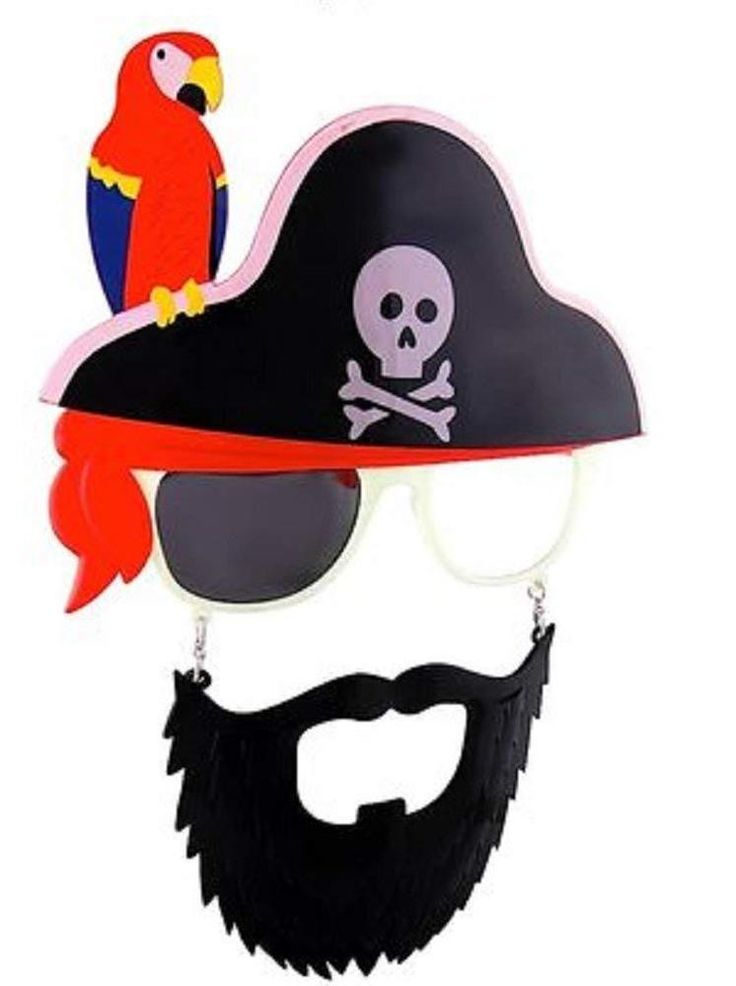
Parrots Were Status Symbols
A parrot’s colorful plumage is beautiful and eye-catching. In the Old World, parrots served as a status symbol to show off the wealth and success of an owner.
Back then, the money required to buy and maintain a parrot wasn’t a small amount. Most people were living in poverty and couldn’t afford expenses that were not vital to their survival.
Keeping a fancy pet was a luxury; some pirates may have wanted to flaunt that privilege like rich nobles. Pirates could show off their parrots to crewmates or people they met when they reached the port.
Parrots Are Social and Intelligent
Parrots are naturally social creatures and very intelligent. This would’ve been valuable to seamen, who needed company during their long voyages. A parrot would be able to talk and learn tricks. Although parrots only mimic human speech, this would help them seem more self-aware than a cat.
Because parrots easily bond with humans, training would have been less difficult than with monkeys.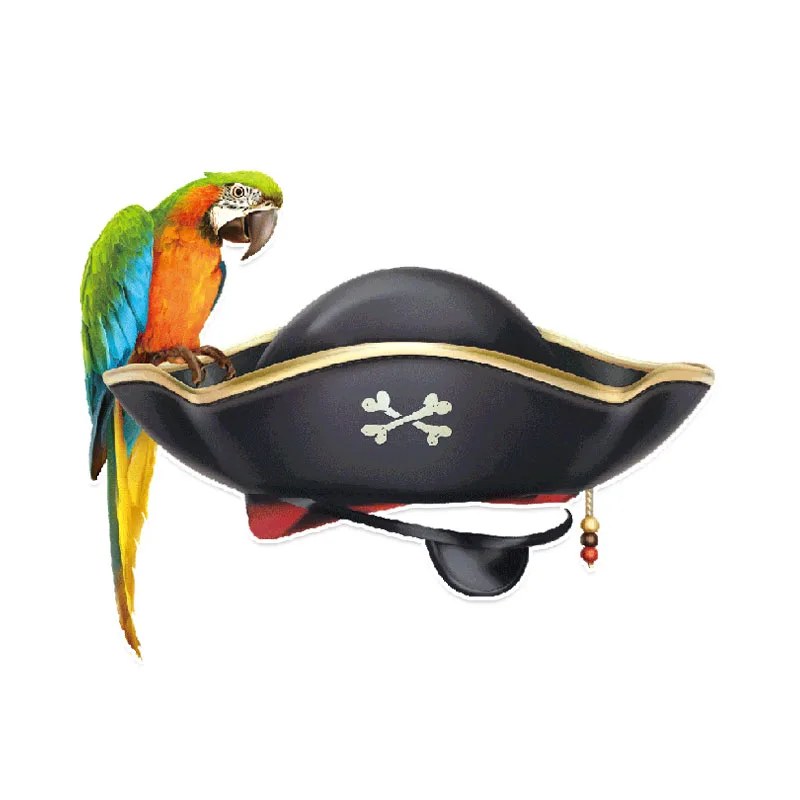 They’re also less likely to attack people when aggravated or curious. If they did strike out at crewmates, the damage would be far less severe than with a monkey’s teeth and claws.
They’re also less likely to attack people when aggravated or curious. If they did strike out at crewmates, the damage would be far less severe than with a monkey’s teeth and claws.
Parrots Can Fly
Parrots’ ability to fly is a big advantage for keeping them on ships. Like cats or monkeys, other animals might fall overboard while running around on deck or while the boat rocks during storms.
However, there is no chance of this happening to parrots. Pirates would be less likely to lose their beloved pets due to accidents or drowning. There is a disadvantage, as a parrot might be able to fly away.
Types of Parrots Pirates Had
Pirates would’ve had access to any parrots they raided from merchant ships. The most expensive type of parrot back then was the macaw, and pirates would have favored them.
Pirates might have caught these macaws in their native habitats in South and Central America and the Caribbean. Realistically, pirates would take what they found.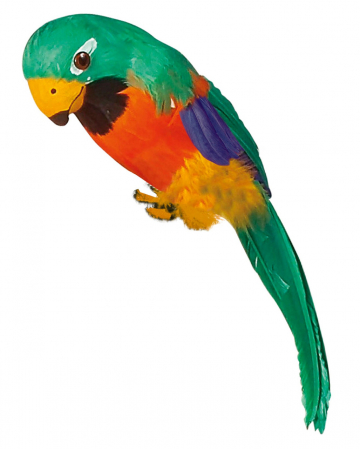 This includes any species found in the New World, depending on where the merchant was sailing from.
This includes any species found in the New World, depending on where the merchant was sailing from.
In fiction, the breed of parrot Long John Silver had is not mentioned in the novel. However, in the original 1934 movie adaptation of the novel, the parrot sitting on his shoulder is most likely:
- A double yellow-headed amazon
- A yellow-crowned amazon
A different breed of parrot can be seen in every adaptation of Treasure Island and every pirate film. They range from macaws to cockatoos. For example, in Pirates of the Caribbean, one character named Cotton has a blue and gold macaw.
What Did Pirate Parrots Say?
Pop culture has assigned many popular phrases to the parrots that pirates kept. In Treasure Island, Long John Silver’s parrot would often scream:
- “Pieces-of-eight! Pieces-of-eight! Pieces-of-eight!”
- “Stand by to go about!”
These are both phrases typical of pirates back then. In Pirates of the Caribbean, one character named Cotton has a parrot who talks on his behalf. Somehow, the mute Cotton managed to train his parrot to say:
Somehow, the mute Cotton managed to train his parrot to say:
- “Mum’s the word”
- “Aye, aye, sir”
In reality, the parrots would likely pick up whatever phrases they heard being said around the ship. These would include:
- Orders
- Slang
- Curses or expletives
All the phrases Cap’n Flint said in Treasure Island were probably learned this way. Cotton’s parrot must have also absorbed phrases from being around other pirates, which directly ties into why parrots can talk in the first place.
As very social creatures, parrots gather in flocks and communicate important information to fellow parrots via chirps and bird songs. While being among humans, parrots also mimic sounds to communicate and fit in.
Pirate Phrases To Teach Your Parrot
Do you want to teach your parrot some pirate phrases? Here are some more common ones that pirates used and their meanings:
- Ahoy, matey (hello, friend)
- Avast ye (pay attention/listen)
- Blow me down (‘wow,’ used when amazed or shocked)
- Old salt (an experienced sailor or pirate)
- Run a rig (to play a joke or prank on someone)
- Thar she blows (a whale sighting)
Famous Pirate Parrots
We know the names of famous pirates, both fictional and non-fictional, such as Blackbeard.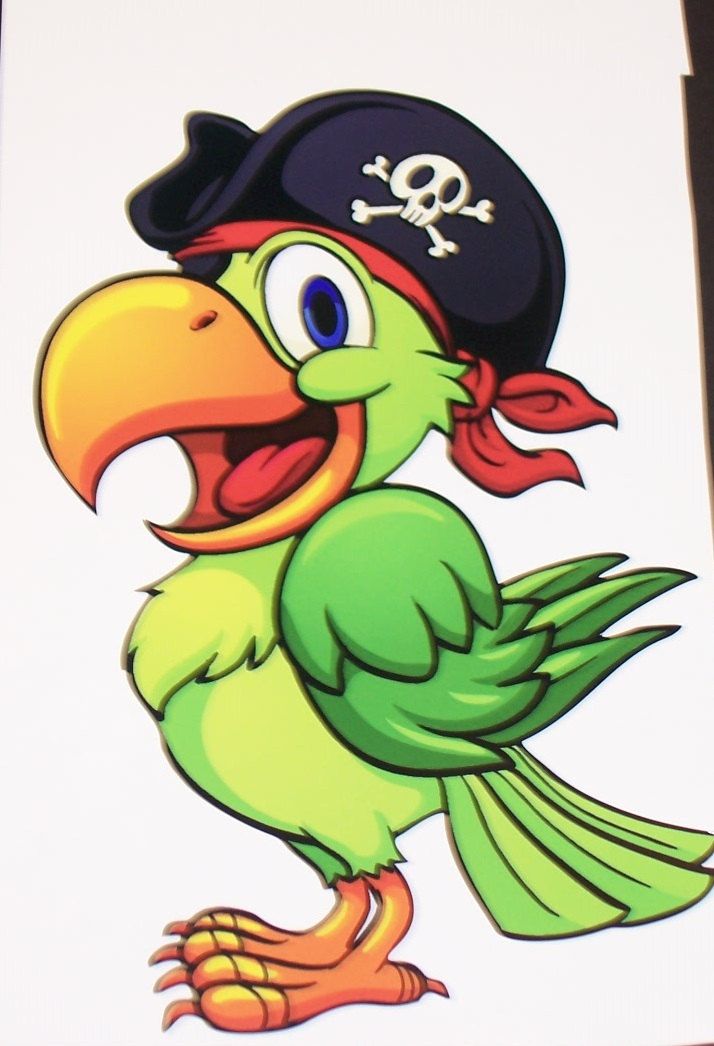 However, the names of their parrot companions are usually a mystery.
However, the names of their parrot companions are usually a mystery.
Even if historic pirates did keep parrots, there are no documented names for these pets. One reason could be that pirates didn’t even name their parrots. After all, most of them would have been kept as cargo before getting traded in the Old World.
There are some parrots that can be found in fiction, including:
- Cap’n Flint in Treasure Island was named after Long John Silver’s previous pirate captain.
- Cotton’s parrot in Pirates of the Caribbean doesn’t have an official name.
- Potty, the Parrot in Spongebob Squarepants, is the fake green parrot sidekick of Patchy the Pirate. Its name is a play on “Polly,” a popular parrot’s name.
Pirate-Inspired Names for Your Parrot
Are you looking to name your parrot? Choosing a pirate-inspired name could be a fun way to pay homage to the history and trope of pirates and their parrots. Here are great ones to choose from:
Names Inspired by Fictional Pirates
Want to give your parrot a name with prestige? Then pick from fiction’s most beloved pirates.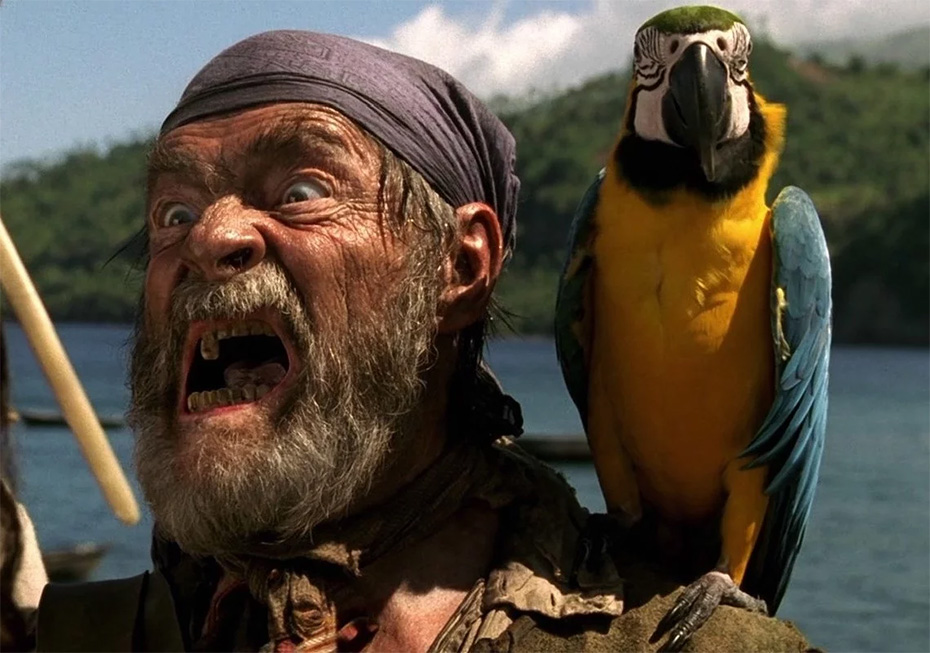
- Jack Sparrow from Pirates of the Caribbean.
- Barbossa from Pirates of the Caribbean.
- Davy Jones, the sailors’ devil. Davy Jones’ Locker means the bottom of the sea, where drowned sailors end up. This myth appears in fiction but also comes from real-life sailors.
- Captain Hook from Peter Pan.
- Long John Silver from Treasure Island.
Names Inspired by Real Pirates
If you want historical accuracy, you can name your parrot after a real pirate.
- Blackbeard: A famous real pirate responsible for many of the pirate tropes today.
- Queen Anne’s Revenge: The name of Blackbeard’s ship.
- Calico Jack: A real pirate and contemporary of Blackbeard.
- Anne Bonny: A woman pirate who left her husband to be with Calico Jack.
- Mary Read: Another woman pirate who sailed with Calico Jack.

- Madame Cheng: A woman pirate who took over her husband’s pirate confederation (which was the largest in history) in the 1800s.
- Barbarossa: A real pirate of the Mediterranean. His name means “red beard” in Italian.
Although pirates rarely kept parrots as companions, the two are still intrinsically tied to each other. Fiction has made them synonymous, and they’re a favorite trope even today. To play into that fun, you can teach your parrot pirate lingo and give it a name to match the aesthetic.
Pirates of the Caribbean parrot breed. The Surprising Truth About Pirates and Parrots
Would you like to take a short trip around the region with your friends and have no one to depend on? Rent a minibus at http://turkostroma.ru/page.php?url=zakaz_arenda_mikroavtobusa and go. There are so many interesting things around.
Ever since John Silver appeared to us on a wooden leg with a parrot on his shoulder, pop culture has made the parrot an indispensable element of a pirate, or rather his shoulder.![]() But here it is very difficult to separate reality from fiction. How do we represent a pirate? A parrot, a wooden leg, an eyepatch, a bandana, a strange snarling Scottish accent... But how was it really?
But here it is very difficult to separate reality from fiction. How do we represent a pirate? A parrot, a wooden leg, an eyepatch, a bandana, a strange snarling Scottish accent... But how was it really?
The parrot was almost certainly a real friend of the pirate. John Silver, star of Robert Louis Stevenson's Treasure Island, was the first fictional pirate to appear everywhere with his beloved parrot, but according to historians and classic piracy experts, this image was based on real facts. And the reasons why the parrot became closely associated with pirates give us a pretty good idea of the actual pirates of the Golden Age.
The golden age of piracy - the period from the mid-1600s to 1730. This period saw several major geopolitical and economic movements that essentially created space for piracy. The discovery of America and Australia led to a boom in the exploration of new territories, which, in turn, led to the fact that fabulous amounts of money and a huge amount of valuables were transported across the oceans. Money, gold, slaves, spices and other expensive goods traveled from one part of the land to another. Transport ships were poorly protected, and the vastness of the oceans and the difficult conditions of sea travel made them weak and vulnerable shells. Many former sailors who knew the seas well wondered why they should waste their energy ferrying goods and trying to make money when they could just steal it all.
Money, gold, slaves, spices and other expensive goods traveled from one part of the land to another. Transport ships were poorly protected, and the vastness of the oceans and the difficult conditions of sea travel made them weak and vulnerable shells. Many former sailors who knew the seas well wondered why they should waste their energy ferrying goods and trying to make money when they could just steal it all.
And so the pirates appeared.
The various periods of the Golden Age of piracy led to various forms of piracy. Angus Konstam, author of A History of Pirates and one of the foremost experts in the world, believes that the term should be limited to the eight year period from 1714 to 1722.
It is worth noting that the pirates who robbed the ships must have been somewhere close to their targets, so they traveled along trade routes, which explains why they were in the right place at the right time. They stayed close to the ships and lived mainly in the Caribbean, West Africa and the Indian Ocean coast.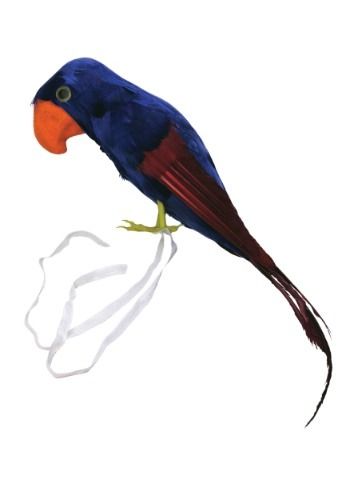
Not only people, but also animals went on sea cruises, and they were needed to maintain morale on the ship. Sea voyages could last for weeks or even months, and as you can imagine, they were incredibly boring and completely devoid of comfort. And it was the animal that could help cheer up during the trip. Which one?
As you might guess, cats were the best companions. They did not require much food, and ate mostly ship rats. They are also warm, fluffy and purring creatures that cheer up. But I would like to note that in those days cats were considered soulless creatures, and we started to love them quite recently. You can read more in a recent article about cat ladies. Dogs, in those days, were mostly owned by aristocrats, and they were considered a pet for high society, so it is unlikely that a dog could be on board a pirate ship.
However, it is worth noting that the pirates often ended up in quite exotic countries, and they had quite a bit of free time and the total net income was extremely low, so they had no particular reason to limit themselves to ordinary European pets, such as cats and dogs.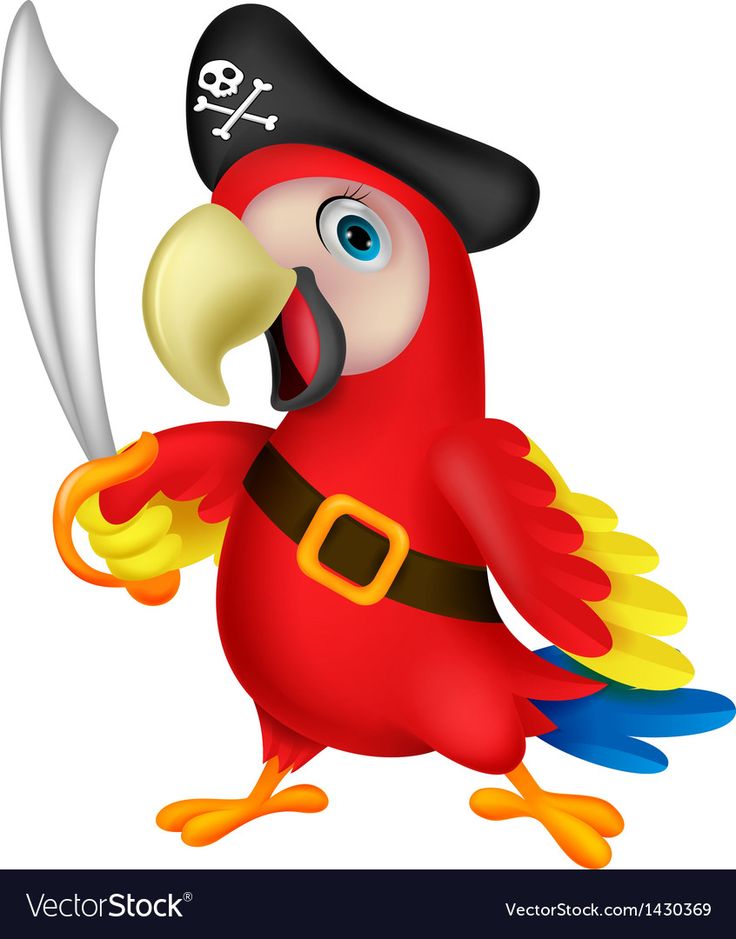 Monkeys, for example, became the pets of pirates more often than cats and dogs, so Captain Barbossa in the Pirates of the Caribbean films can be seen as a "favorite monkey." But the parrot was the smarter choice. They eat little compared to a dog, cat or monkey, and their food (seeds, fruits, nuts) can be easily stored on board. They are bright, funny and have intelligence - they can show off in the port, which was important for pirates.
Monkeys, for example, became the pets of pirates more often than cats and dogs, so Captain Barbossa in the Pirates of the Caribbean films can be seen as a "favorite monkey." But the parrot was the smarter choice. They eat little compared to a dog, cat or monkey, and their food (seeds, fruits, nuts) can be easily stored on board. They are bright, funny and have intelligence - they can show off in the port, which was important for pirates.
People who stayed ashore used to pay good money for parrots and other exotic animals, and sailors could easily buy them in many Caribbean ports. Some kept the parrots for themselves, but most were sold when the ship came home. They were bright, could be taught to talk, and were well valued in London's bird markets. American cities such as Boston and Charleston, where parrots could be sold, were much smaller than London in those days, and pirates were often notorious and pursued criminals who had a hard time entering the port of a city as densely populated as London, for example.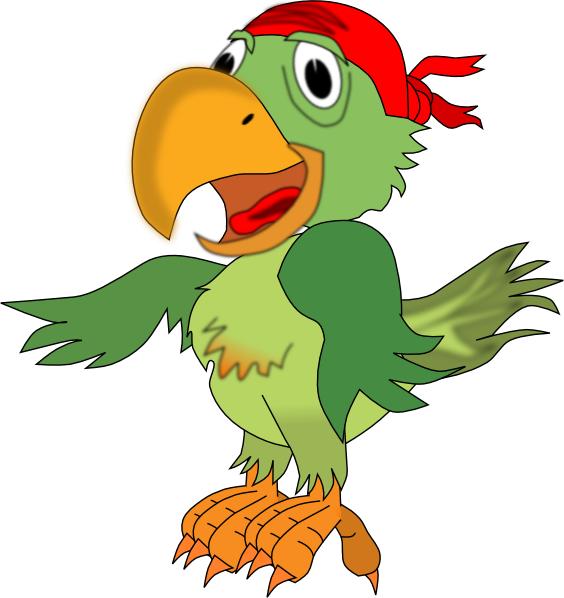
William Dampier, a British explorer, noted that the best parrots were brought from Veracruz, the coastal region of Mexico. The pirates may have changed, but the people have not. Veracruz is still one of the largest illegal parrot trade points, a place where parrots are illegally hunted every year.
So we can conclude that parrots were really the most favorite pets of pirates and all this because they could be sold dearly, they ate little, they were a kind of beautiful trinket, and they sat on the shoulder because the pirate taught him to speak in order to end up selling it for a higher price.
Material prepared specifically for the site
P.S. My name is Alexander. This is my personal, independent project. I am very glad if you liked the article. Want to help the site? Just look below for an ad for what you've recently been looking for.
Igor Y
In Soviet cinema, I think this question was better.
For example, the same Drozdov, being a film consultant, would hardly advise a pirate of the Caribbean to sit an Australian parrot on his shoulder.
But all this needs to be checked.
I remember the Soviet 3-episode "Treasure Island" - it was presented to the viewer as a children's film, although... Cap Flint, Silver's green (original) parrot (played by O.Borisov), was a large white cockatoo with a luxurious crest.
True, it was a trifle compared to everything else. I wouldn't call this film childish - it was just stupid (the difference is colossal).
However, Cap Flint could still be a cockatoo parrot. Copying Silver's words:
"...He sailed with England, with the famous captain England, a pirate. He visited Madagascar, Malabar [Malabar is an area on the southwestern coast of India], Suriname [Suriname is the same as Dutch Guiana ( in South America)], in Providence [Providence is an island in the Indian Ocean], in Porto Bello [Porto Bello is a port in Scotland].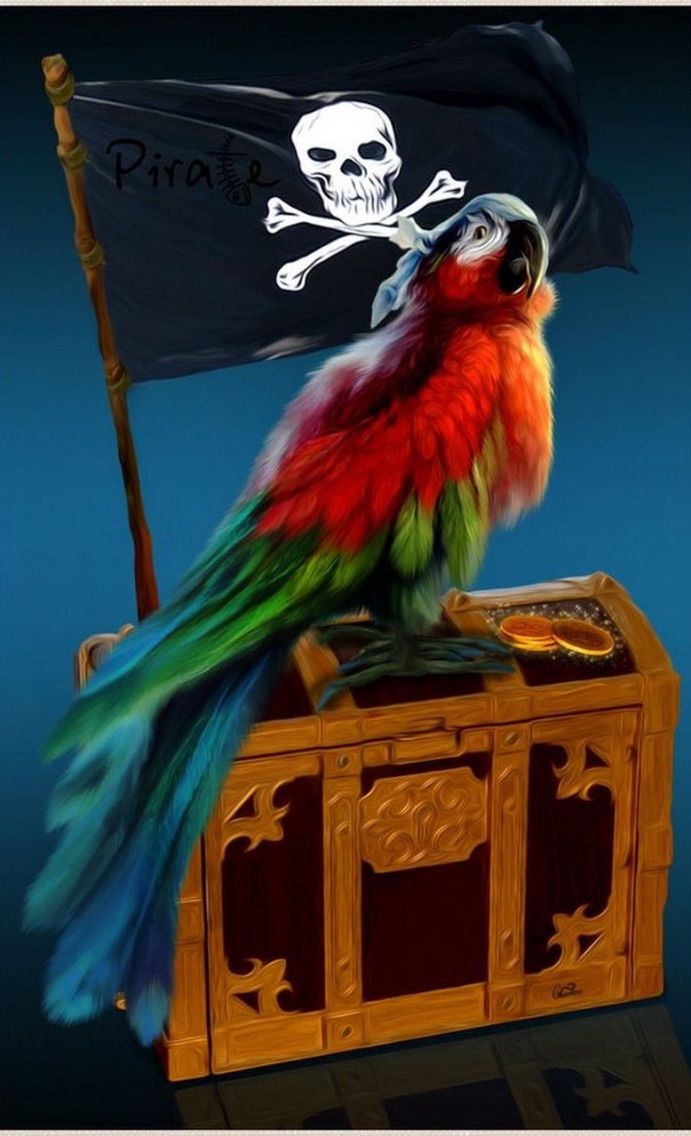 of Spanish America to Spain]. That's when he learned to call "piasters". And there is nothing to be surprised about: three hundred and fifty thousand piastres were fished that day, Hawkins! This parrot was present at the attack on the Viceroy of India not far from Goa [Portuguese colony in India ]. And in appearance he seems like a baby ... "
of Spanish America to Spain]. That's when he learned to call "piasters". And there is nothing to be surprised about: three hundred and fifty thousand piastres were fished that day, Hawkins! This parrot was present at the attack on the Viceroy of India not far from Goa [Portuguese colony in India ]. And in appearance he seems like a baby ... "
All notes are taken from the text of the book. India is mentioned twice - and from India to Indonesia, where white cockatoos live, is not so far away. However, Silver could lie - he was a master of this business.
And even Stevenson, the writer, - and even more so! :mrgreen:
As for small breeds - why not? After all, a pirate's parrot is not a weapon of intimidation, but rather a piece of his human qualities. I think that's why they got birds. From that rabble that was in the pirate team, nothing good could be expected, only "pen in the barrel" And the bird was just that outlet where you can put the remnants of sentimentality.
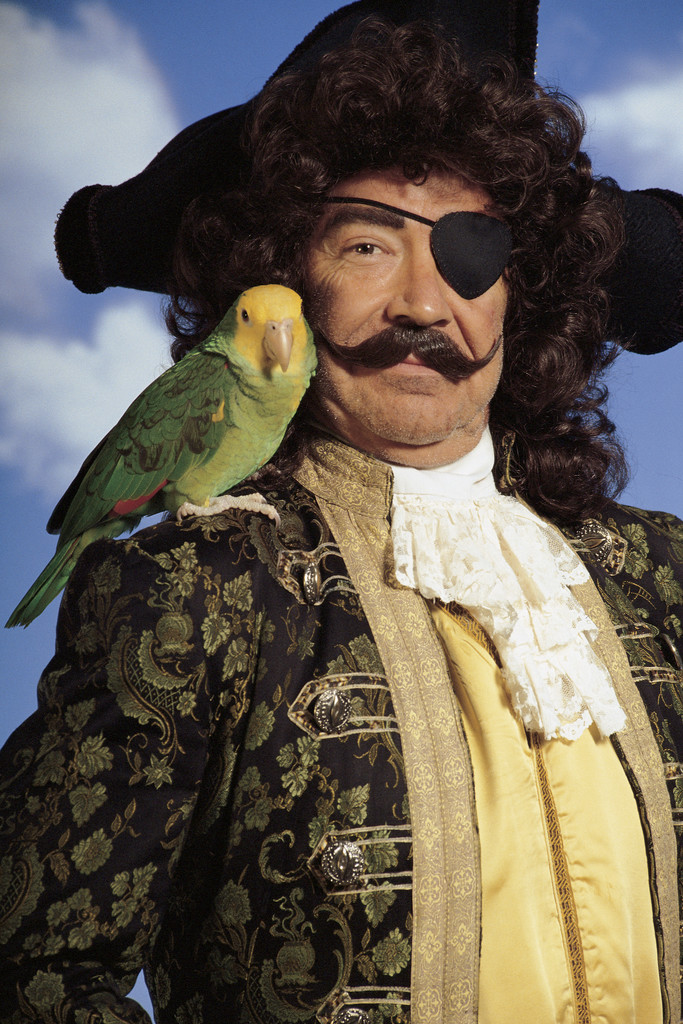
Or maybe the pirate captain had a parrot, like a jester to the king.
Jesters, which is characteristic, were often smarter than their masters. (After all, a pirate is such a simple ruba k a-guy:duel_2: , and the loot from was also very easy to spend:prost:)
Cuckoo, gray cockatiel. (Spring 1994 - autumn 2004).
Vasya, a green necklace parrot. (Year of birth - 2005, spring).
How to properly feed a parrot:
A wise man knows that through wisdom one can come to sorrow. But the cynic does not know that through sorrow one cannot come to wisdom.
The cynic can neither justify himself nor explain what is going on around him - that is why he does both at the same time.
The cynic loves nature so much that he tries to imitate it - nature suffers from this first.
The cynic does not see the difference between freedom, adulthood and causing evil - three very distant things from each other.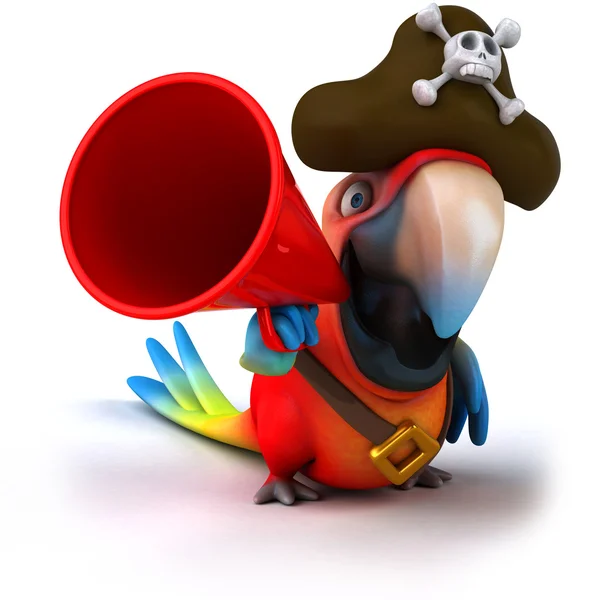
Many, in childhood, read the entertaining novel "Treasure Island" by the English writer - Robert Stevenson. When John Silver showed up at the tavern, which belonged to the mother of young John, the protagonist of the work, a parrot was sitting on the shoulder of the old pirate. It is John Silver who represents the most classic image of a pirate. Well, of course, he did not appear out of nowhere, like the parrot sitting on his shoulder.
After all, pirates - mainly plowed the warm seas, in particular, of course - the Caribbean Sea. And they often stopped on the opposite islands, where they rested and made various purchases, in particular, they acquired parrots. Pirates were especially attracted by colorful birds, such as Ara parrots, they were not even afraid of the powerful beaks of the aratung, which could bite the mast rope at once! Or chop off a piece of a pirate cocked hat. But pirates are pirates for that - that you can’t intimidate them with such nonsense.
Some wonder how this parrot can sit on his shoulder and not try to fly anywhere, did the pirates really know how to tame them so well? But far from always, such perseverance of a parrot depended only on diligent upbringing, often the wings of an unfortunate bird were simply clipped .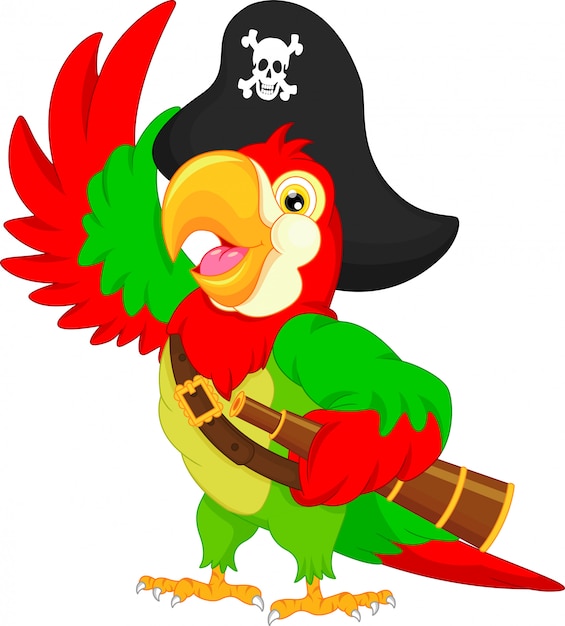 .. And where is there for a rude sailor to delve into the intricacies of training and keeping a bird. It’s good that she is alive and well, even with clipped wings! After all, a parrot needs a special diet, and how does a sea wolf know about this? Often the birds had to be content with what their owners ate. Well, a pirate parrot - should not be a sissy!
.. And where is there for a rude sailor to delve into the intricacies of training and keeping a bird. It’s good that she is alive and well, even with clipped wings! After all, a parrot needs a special diet, and how does a sea wolf know about this? Often the birds had to be content with what their owners ate. Well, a pirate parrot - should not be a sissy!
Sailors were especially amused by the ability of these birds to talk. Rather, to the imitation of human speech. It is easy to imagine what kind of "cultural" words such a Popka could type! Arriving most of the time in the company of drunken sailors and officers. If such a parrot, having lived for several years with the corsairs, accidentally fell into a decent society, then we can say with great certainty that many ladies would faint from his heavy words!
An interesting observation: as you know, parrots, especially their large species, like the mentioned ARA, live quite a long time. From 70 to 100 plus years! So they were quite capable of surviving their "sea master", and sometimes more than one.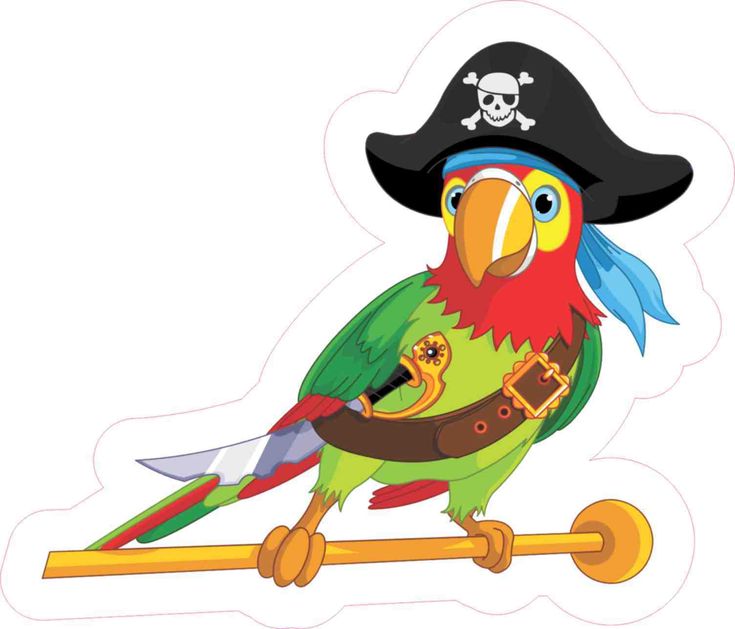 And since the parrots were trusted, they could well have a discussion on the topic "where to bury the prey" in their presence. And the parrot, later could reproduce the words of the pirates in the presence of a third party. And these words could well contain very interesting, secret information. Thus, the pirate parrot - turned into a real compass capable of pointing to the "treasure island"!
And since the parrots were trusted, they could well have a discussion on the topic "where to bury the prey" in their presence. And the parrot, later could reproduce the words of the pirates in the presence of a third party. And these words could well contain very interesting, secret information. Thus, the pirate parrot - turned into a real compass capable of pointing to the "treasure island"!
Faktrum publishes a selection of facts from the publication Hotshowlife, which tells what the sea robbers really were, inspiring horror to decent sailors.
Antique piracy
Image source: hotshowlife.com
Pirates were known in antiquity, they were called "leistes". Antique pirates, unlike the New Age robbers, plundered small coastal villages, attacked lone travelers and sold them into slavery. The heyday of piracy falls on the 16th-18th centuries, when trade flourished, and it was not yet possible to provide decent protection.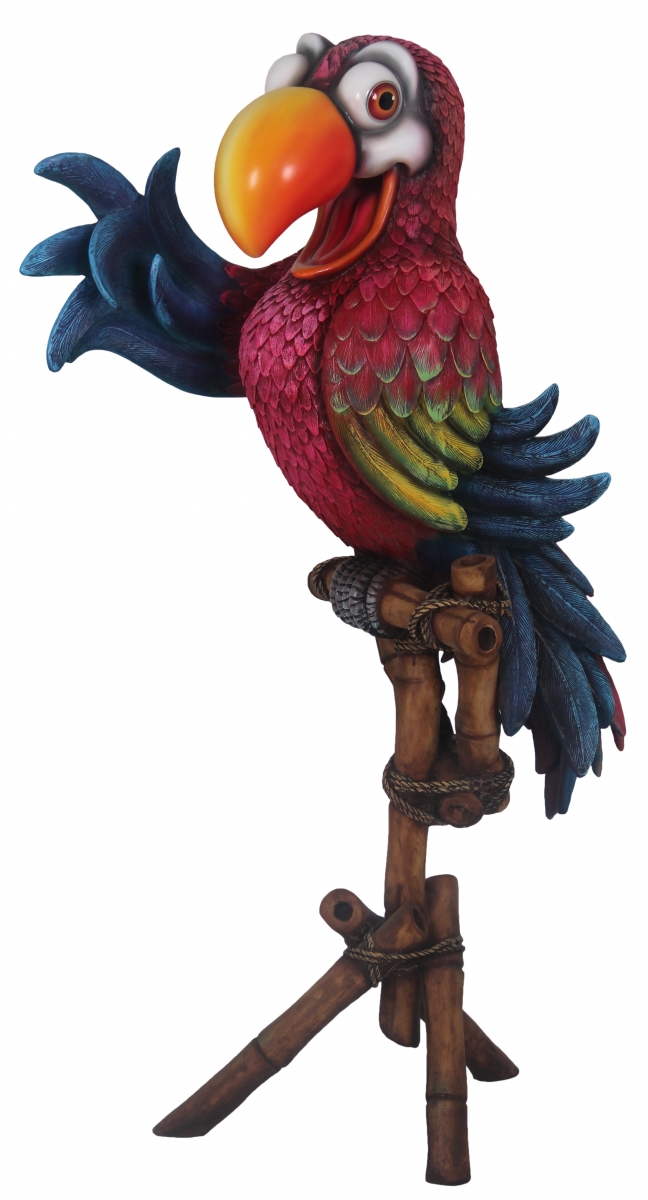
Yo-ho-ho, and a bottle of rum!
Despite the deep-rooted fame of drunkards, many pirate ships were under prohibition, most pirates only allowed themselves to drink on land. The myth that rum flows through the veins of pirates instead of blood has spread due to the popularity of Stevenson's novel Treasure Island.
History of the eye patch
The eye patch did not always mask the mutilation. Sailors often had to descend into poorly lit holds, it takes some time for the human eye to adjust to the darkness. But if the pirate wore a bandage, then removing it in the dark, he immediately saw well with one eye.
Pirate flag "Jolly Roger"
Jolly Roger - a flag with human bones on a black background is strongly associated with a robber ship. It is generally believed that pirates walked under it all the time, but this is not true. It was a signal warning that there was an epidemic on the ship. Being outside the law, the pirates hid and camouflaged their ships by displaying the flags of different countries.![]() For example, when attacking the Spaniards, the robbers raised the English flag, since at that time Spain and England were at war.
For example, when attacking the Spaniards, the robbers raised the English flag, since at that time Spain and England were at war.
Privateers and Corsairs
A very interesting fact is the existence of legal piracy. Some countries with developed maritime trade partially legalized piracy, deriving income from robbery. A privateer is a private individual who has received a letter of marque. Such a person had the right to capture and destroy the ships of hostile and neutral countries in exchange for a certain percentage of the loot, which was deducted to the employer. Corsair is synonymous with privateer.
How was the booty divided?
Pirates had their own loot distribution system. The quartermaster gave a tenth share to the captain, the rest of the booty was divided into equal parts. Each member of the team had the right to receive compensation for the injury. The members of the team who did not take part in the battles received the least.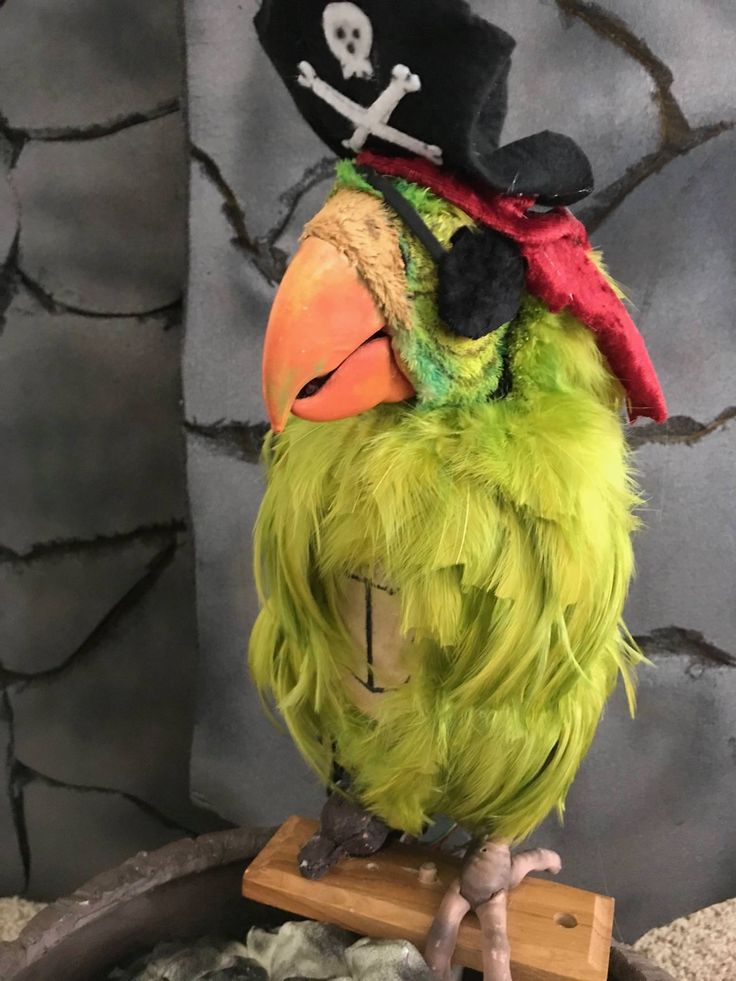
Francis Drake
The famous corsair and navigator Francis Drake was the first Englishman to circumnavigate the world. He became famous for opening the strait between the island of Tierra del Fuego and Antarctica, as well as the defeat of the Spanish fleet in 1578. For his contribution to the field of geography and service to the crown, he was awarded a knighthood.
Discipline
Movies portray pirates as cruel barbarians, undisciplined, with a complete lack of manners. Is it so? Even the military could envy their discipline. For violation of the order, the perpetrators were severely punished. The offender could be left alone on a desert island, beaten or tied to a mast. Many captains of pirate ships were well-read and educated people, because they had to manage the navigation of the ship and monitor the health of all mechanisms.
Why do pirates need earrings and where does the parrot come from?
On the screens we often see pirates depicted with an earring in their ear and a parrot on their shoulder. In fact, only the most experienced thugs were allowed to wear the earring when they crossed the equator or overcame Cape Horn, the Tierra del Fuego archipelago. Of course, there was no question of training exotic birds by a team of thugs.
In fact, only the most experienced thugs were allowed to wear the earring when they crossed the equator or overcame Cape Horn, the Tierra del Fuego archipelago. Of course, there was no question of training exotic birds by a team of thugs.
Where are the treasures buried?
The most common misconception about pirates is their wealth, as well as the fact that they buried the loot on the islands. Most often, pirate ships did not have impressive firepower, and their size was not so significant. With such an arsenal, it made no sense to storm large ships and well-armed Spanish galleons. Looted from private merchants, small quantities of goods were sold by pirates at a price much less than their value. Sea robbery was a very dangerous occupation, and the age of a pirate was not great, so there was no point in burying treasures.
Pirates of the Caribbean Parrot breed. Pirates of the Caribbean and their parrots
Factrum publishes a selection of facts from the publication Hotshowlife, which tells what the sea robbers really were, inspiring horror to decent sailors.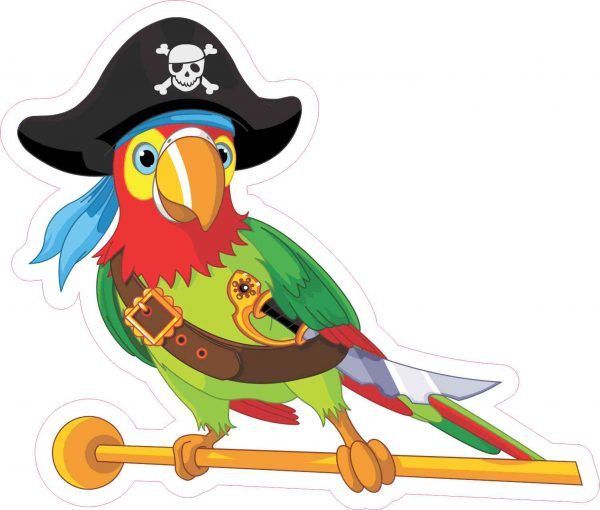
Antique piracy
Image source: hotshowlife.com
Pirates were known in antiquity, they were called "leistes". Antique pirates, unlike the New Age robbers, plundered small coastal villages, attacked lone travelers and sold them into slavery. The heyday of piracy falls on the 16th-18th centuries, when trade flourished, and it was not yet possible to provide decent protection.
Yo-ho-ho, and a bottle of rum!
Despite the deep-rooted fame of drunkards, many pirate ships were under prohibition, most pirates only allowed themselves to drink on land. The myth that rum flows through the veins of pirates instead of blood has spread due to the popularity of Stevenson's novel Treasure Island.
History of the eye patch
The eye patch did not always mask the mutilation. Sailors often had to descend into poorly lit holds, it takes some time for the human eye to adjust to the darkness. But if the pirate wore a bandage, then removing it in the dark, he immediately saw well with one eye.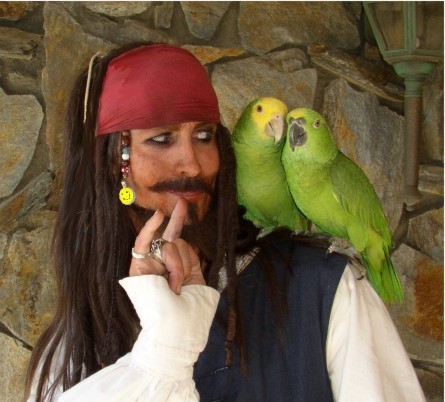
Pirate flag "Jolly Roger"
Jolly Roger - a flag with human bones on a black background is strongly associated with a robber ship. It is generally believed that pirates walked under it all the time, but this is not true. It was a signal warning that there was an epidemic on the ship. Being outside the law, the pirates hid and camouflaged their ships by displaying the flags of different countries. For example, when attacking the Spaniards, the robbers raised the English flag, since at that time Spain and England were at war.
Privateers and Corsairs
A very interesting fact is the existence of legal piracy. Some countries with developed maritime trade partially legalized piracy, deriving income from robbery. A privateer is a private individual who has received a letter of marque. Such a person had the right to capture and destroy the ships of hostile and neutral countries in exchange for a certain percentage of the loot, which was deducted to the employer.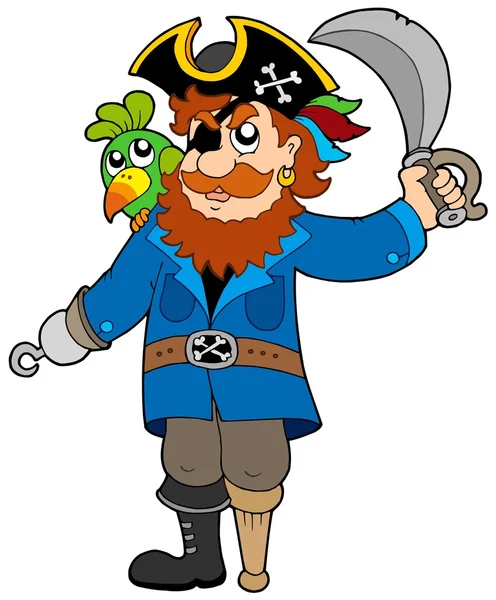 Corsair is synonymous with privateer.
Corsair is synonymous with privateer.
How was the booty divided?
Pirates had their own loot distribution system. The quartermaster gave a tenth share to the captain, the rest of the booty was divided into equal parts. Each member of the team had the right to receive compensation for the injury. The members of the team who did not take part in the battles received the least.
Francis Drake
The famous corsair and navigator Francis Drake was the first Englishman to circumnavigate the world. He became famous for opening the strait between the island of Tierra del Fuego and Antarctica, as well as the defeat of the Spanish fleet in 1578. For his contribution to the field of geography and service to the crown, he was awarded a knighthood.
Discipline
Movies portray pirates as cruel barbarians, undisciplined, with a complete lack of manners. Is it so? Even the military could envy their discipline. For violation of the order, the perpetrators were severely punished.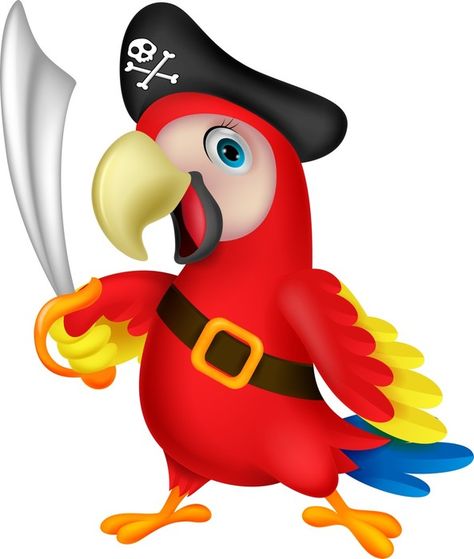 The offender could be left alone on a desert island, beaten or tied to a mast. Many captains of pirate ships were well-read and educated people, because they had to manage the navigation of the ship and monitor the health of all mechanisms.
The offender could be left alone on a desert island, beaten or tied to a mast. Many captains of pirate ships were well-read and educated people, because they had to manage the navigation of the ship and monitor the health of all mechanisms.
Why do pirates need earrings and where does the parrot come from?
On the screens we often see pirates depicted with an earring in their ear and a parrot on their shoulder. In fact, only the most experienced thugs were allowed to wear the earring when they crossed the equator or overcame Cape Horn, the Tierra del Fuego archipelago. Of course, there was no question of training exotic birds by a team of thugs.
Where are the treasures buried?
The most common misconception about pirates is their wealth, as well as the fact that they buried the loot on the islands. Most often, pirate ships did not have impressive firepower, and their size was not so significant. With such an arsenal, it made no sense to storm large ships and well-armed Spanish galleons.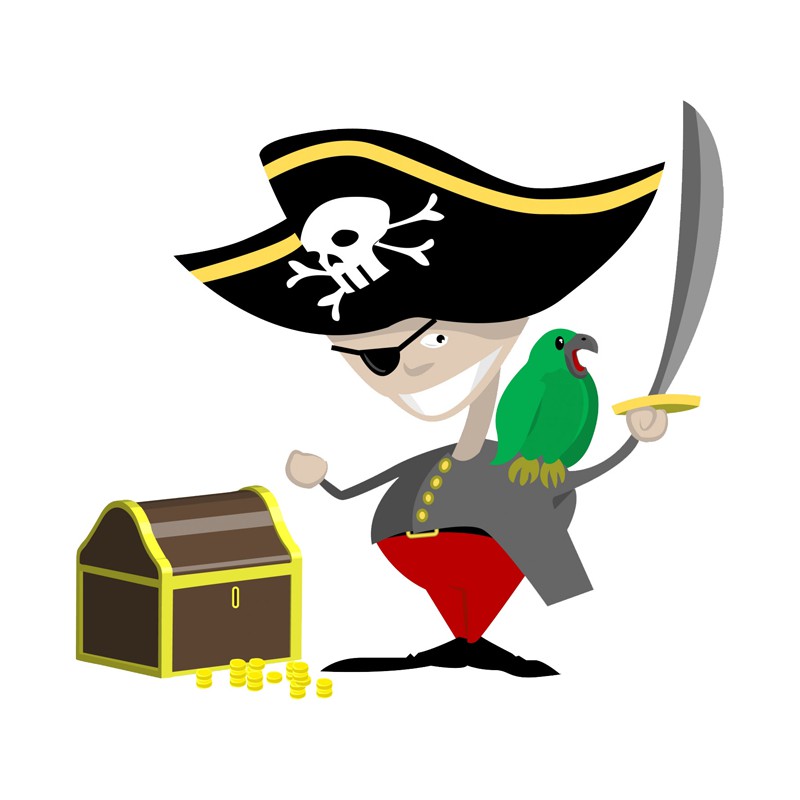 Looted from private merchants, small quantities of goods were sold by pirates at a price much less than their value. Sea robbery was a very dangerous occupation, and the age of a pirate was not great, so there was no point in burying treasures.
Looted from private merchants, small quantities of goods were sold by pirates at a price much less than their value. Sea robbery was a very dangerous occupation, and the age of a pirate was not great, so there was no point in burying treasures.
Igor Y
In Soviet cinema, I think this question was better. For example, the same Drozdov, being a film consultant, would hardly advise a pirate of the Caribbean to sit an Australian parrot on his shoulder.
But all this needs to be checked.
I remember the Soviet 3-episode "Treasure Island" - it was presented to the viewer as a children's film, although... Cap Flint, Silver's green (original) parrot (played by O.Borisov), was a large white cockatoo with a luxurious crest.
True, it was a trifle compared to everything else.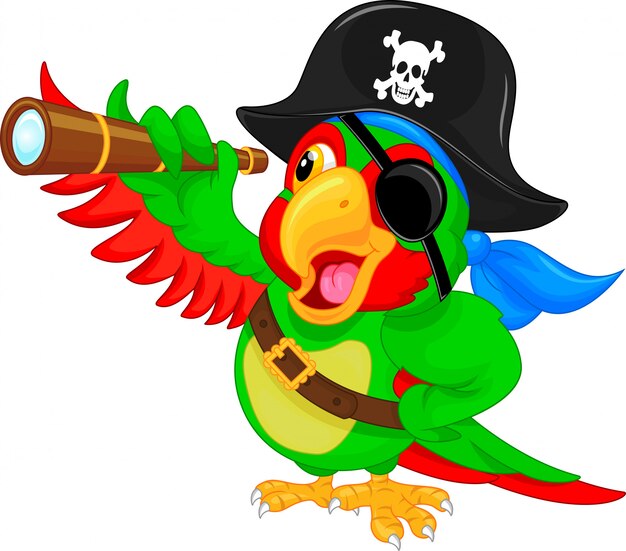 I wouldn't call this film childish - it was just stupid (the difference is colossal).
I wouldn't call this film childish - it was just stupid (the difference is colossal).
However, Cap Flint could still be a cockatoo parrot. I copy Silver's words:
"... He sailed with England, with the famous captain England, a pirate. He visited Madagascar, Malabar [Malabar - an area on the southwestern coast of India], Suriname [Suriname - the same, that Dutch Guiana (in South America)], in Providence [Providence is an island in the Indian Ocean], in Porto Bello [Porto Bello is a port in Scotland]. who were transporting gold from Spanish America to Spain.] That's when he learned to yell "piastres". And there's nothing to be surprised about: three hundred and fifty thousand piastres were caught that day, Hawkins! This parrot was present at the attack on the Viceroy of India not far from Goa [Portuguese a colony in India]. And in appearance he seems like a baby ... "
All notes are taken from the text of the book. India is mentioned twice - and from India to Indonesia, where white cockatoos live, is not so far away.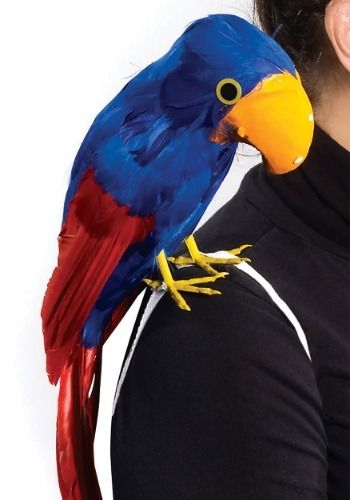 However, Silver could lie - he was a master of this business.
However, Silver could lie - he was a master of this business.
And even Stevenson, the writer, - and even more so! :mrgreen:
As for small breeds - why not? After all, a pirate's parrot is not a weapon of intimidation, but rather a piece of his human qualities. I think that's why they got birds. From that rabble that was in the pirate team, nothing good could be expected, only "pen in the barrel" And the bird was just that outlet where you can put the remnants of sentimentality.
Or maybe the pirate captain had a parrot, like a jester to the king.
Jesters, which is characteristic, were often smarter than their masters. (After all, a pirate is such a simple ruba k a-guy:duel_2: , and the loot from was also very easy to spend:prost:)
Cuckoo, gray cockatiel.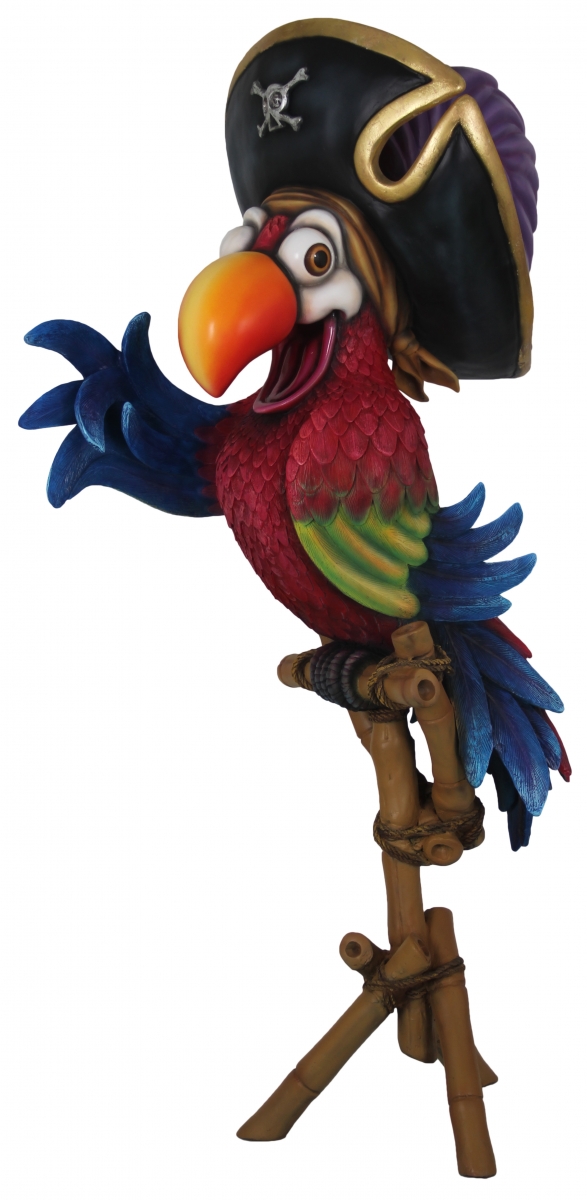 (Spring 1994 - autumn 2004).
(Spring 1994 - autumn 2004).
Vasya, a green necklace parrot. (Year of birth - 2005, spring).
How to properly feed a parrot:
A wise man knows that through wisdom one can come to sorrow. But the cynic does not know that through sorrow one cannot come to wisdom.
The cynic can neither justify himself nor explain what is going on around him - that is why he does both at the same time.
The cynic loves nature so much that he tries to imitate it - nature suffers from this first.
The cynic does not see the difference between freedom, adulthood and causing evil - three very distant things from each other.
Do you want to go on a short trip around the region with friends and have no one to depend on? Rent a minibus at http://turkostroma.ru/page.php?url=zakaz_arenda_mikroavtobusa and go. There are so many interesting things around.
Ever since John Silver appeared to us on a wooden leg with a parrot on his shoulder, pop culture has made the parrot an indispensable element of a pirate, or rather his shoulder.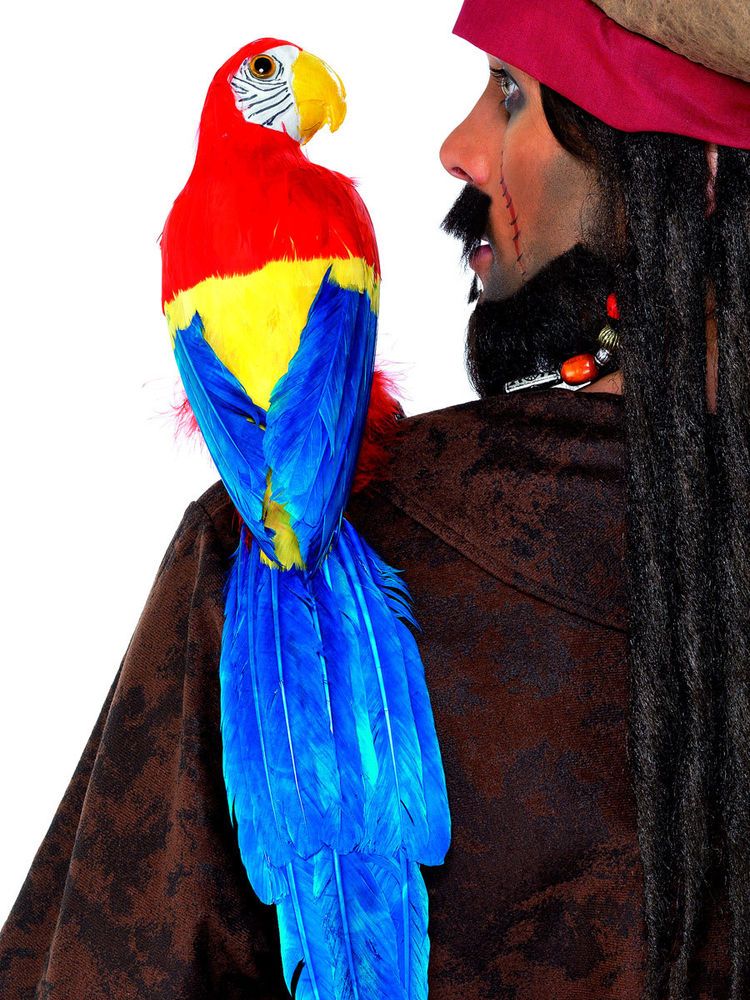 But here it is very difficult to separate reality from fiction. How do we represent a pirate? A parrot, a wooden leg, an eyepatch, a bandana, a strange snarling Scottish accent... But how was it really?
But here it is very difficult to separate reality from fiction. How do we represent a pirate? A parrot, a wooden leg, an eyepatch, a bandana, a strange snarling Scottish accent... But how was it really?
The parrot was almost certainly a real friend of the pirate. John Silver, star of Robert Louis Stevenson's Treasure Island, was the first fictional pirate to appear everywhere with his beloved parrot, but according to historians and classic piracy experts, this image was based on real facts. And the reasons why the parrot became closely associated with pirates give us a pretty good idea of the actual pirates of the Golden Age.
The golden age of piracy is the period from the mid-1600s to 1730. This period saw several major geopolitical and economic movements that essentially created space for piracy. The discovery of America and Australia led to a boom in the exploration of new territories, which, in turn, led to the fact that fabulous amounts of money and a huge amount of valuables were transported across the oceans. Money, gold, slaves, spices and other expensive goods traveled from one part of the land to another. Transport ships were poorly protected, and the vastness of the oceans and the difficult conditions of sea travel made them weak and vulnerable shells. Many former sailors who knew the seas well wondered why they should waste their energy ferrying goods and trying to make money when they could just steal it all.
Money, gold, slaves, spices and other expensive goods traveled from one part of the land to another. Transport ships were poorly protected, and the vastness of the oceans and the difficult conditions of sea travel made them weak and vulnerable shells. Many former sailors who knew the seas well wondered why they should waste their energy ferrying goods and trying to make money when they could just steal it all.
And so the pirates appeared.
The various periods of the Golden Age of piracy led to various forms of piracy. Angus Konstam, author of A History of Pirates and one of the foremost experts in the world, believes that the term should be limited to the eight year period from 1714 to 1722.
It is worth noting that the pirates who robbed the ships must have been somewhere close to their targets, so they traveled along trade routes, which explains why they were in the right place at the right time. They stayed close to the ships and lived mainly in the Caribbean, West Africa and the Indian Ocean coast.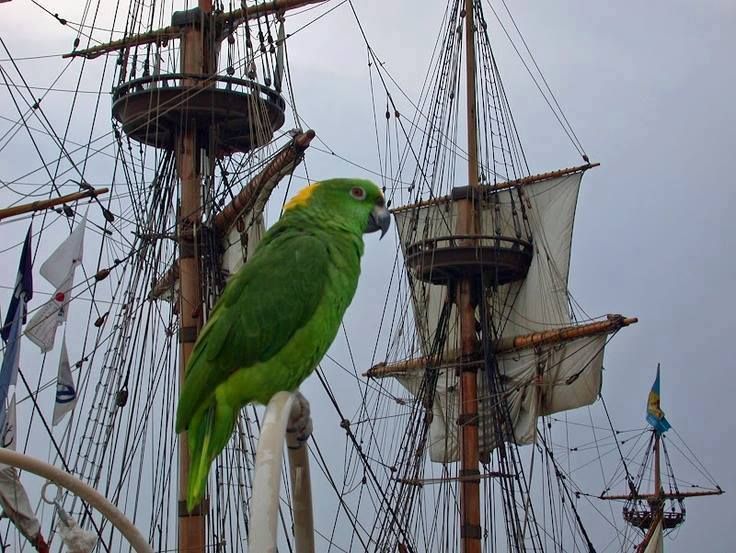
Not only people, but also animals went on sea cruises, and they were needed to maintain morale on the ship. Sea voyages could last for weeks or even months, and as you can imagine, they were incredibly boring and completely devoid of comfort. And it was the animal that could help cheer up during the trip. Which one?
As you might guess, cats were the best companions. They did not require much food, and ate mostly ship rats. They are also warm, fluffy and purring creatures that cheer up. But I would like to note that in those days cats were considered soulless creatures, and we started to love them quite recently. You can read more in a recent article about cat ladies. Dogs, in those days, were mostly owned by aristocrats, and they were considered a pet for high society, so it is unlikely that a dog could be on board a pirate ship.
However, it is worth noting that the pirates often ended up in quite exotic countries, and they had quite a bit of free time and the total net income was extremely low, so they had no particular reason to limit themselves to ordinary European pets, such as cats and dogs.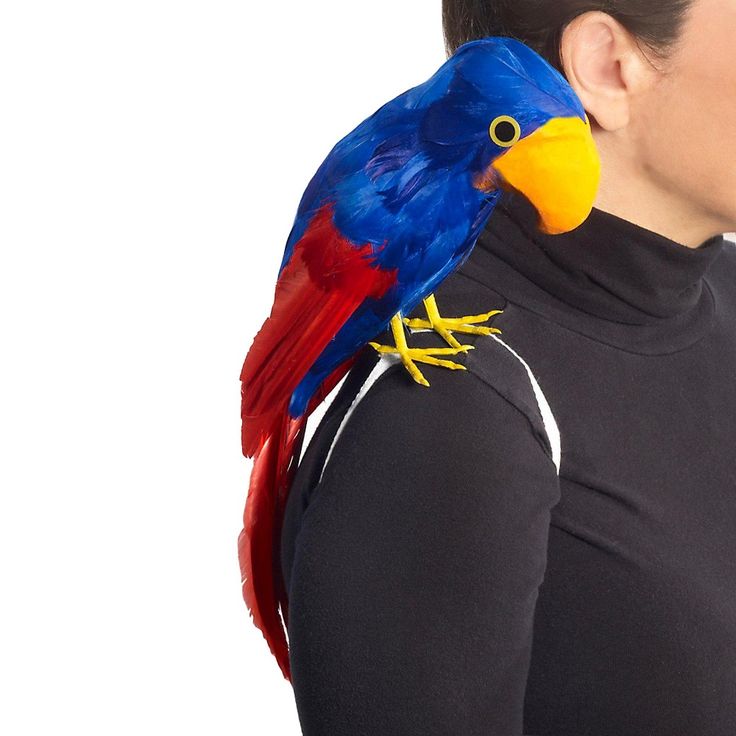 Monkeys, for example, became the pets of pirates more often than cats and dogs, so Captain Barbossa in the Pirates of the Caribbean films can be seen as a "favorite monkey." But the parrot was the smarter choice. They eat little compared to a dog, cat or monkey, and their food (seeds, fruits, nuts) can be easily stored on board. They are bright, funny and have intelligence - they can show off in the port, which was important for pirates.
Monkeys, for example, became the pets of pirates more often than cats and dogs, so Captain Barbossa in the Pirates of the Caribbean films can be seen as a "favorite monkey." But the parrot was the smarter choice. They eat little compared to a dog, cat or monkey, and their food (seeds, fruits, nuts) can be easily stored on board. They are bright, funny and have intelligence - they can show off in the port, which was important for pirates.
People who stayed ashore used to pay good money for parrots and other exotic animals, and sailors could easily buy them in many Caribbean ports. Some kept the parrots for themselves, but most were sold when the ship came home. They were bright, could be taught to talk, and were well valued in London's bird markets. American cities such as Boston and Charleston, where parrots could be sold, were much smaller than London in those days, and pirates were often notorious and pursued criminals who had a hard time entering the port of a city as densely populated as London, for example.